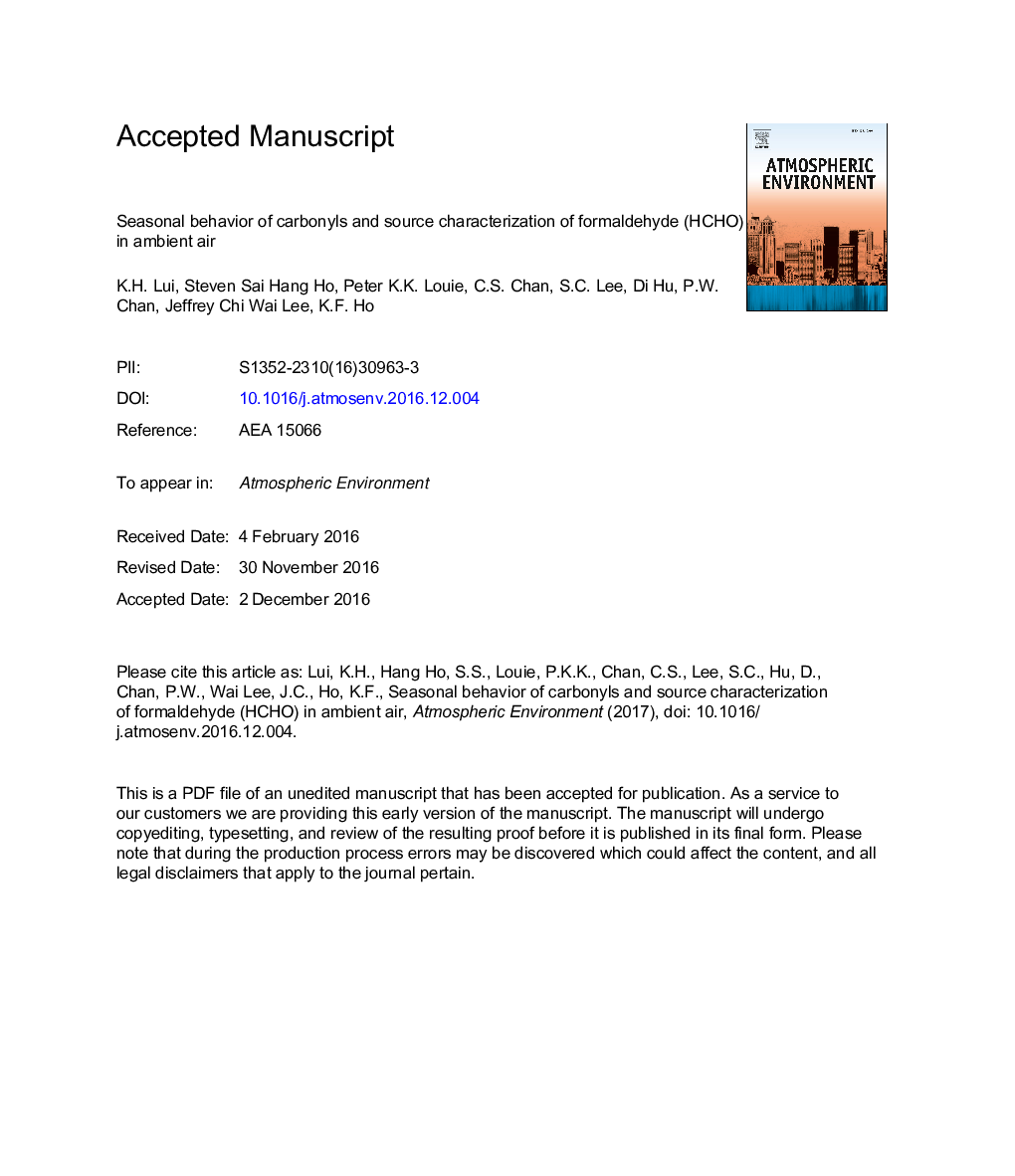| Article ID | Journal | Published Year | Pages | File Type |
|---|---|---|---|---|
| 5753388 | Atmospheric Environment | 2017 | 34 Pages |
Abstract
Gas-phase formaldehyde (HCHO) is an intermediate and a sensitive indicator for volatile organic compounds (VOCs) oxidation, which drives tropospheric ozone production. Effective photochemical pollution control strategies demand a thorough understanding of photochemical oxidation precursors, making differentiation between sources of primary and secondary generated HCHO inevitable. Spatial and seasonal variations of airborne carbonyls based on two years of measurements (2012-2013), coupled with a correlation-based HCHO source apportionment analysis, were determined for three sampling locations in Hong Kong (denoted HT, TC, and YL). Formaldehyde and acetaldehyde were the two most abundant compounds of the total quantified carbonyls. Pearson's correlation analysis (r > 0.7) implies that formaldehyde and acetaldehyde possibly share similar sources. The total carbonyl concentration trends (HT < TC < YL) reflect location characteristics (urban > rural). A regression analysis further quantifies the relative primary HCHO source contributions at HT (â¼13%), TC (â¼21%), and YL (â¼40%), showing more direct vehicular emissions in urban than rural areas. Relative secondary source contributions at YL (â¼36%) and TC (â¼31%) resemble each other, implying similar urban source contributions. Relative background source contributions at TC could be due to a closed structure microenvironment that favors the trapping of HCHO. Comparable seasonal differences are observed at all stations. The results of this study will aid in the development of a new regional ozone (O3) control policy, as ambient HCHO can enhance O3 production and also be produced from atmospheric VOCs oxidation (secondary HCHO).
Related Topics
Physical Sciences and Engineering
Earth and Planetary Sciences
Atmospheric Science
Authors
K.H. Lui, Steven Sai Hang Ho, Peter K.K. Louie, C.S. Chan, S.C. Lee, Di Hu, P.W. Chan, Jeffrey Chi Wai Lee, K.F. Ho,
